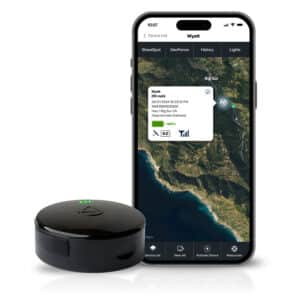In the world of law enforcement, GPS tracking is a literal lifesaver. Law enforcement agencies around the world rely on GPS to help track their personnel and official vehicles, helping to keep communities safer at all hours of the day. Here’s a look at the many ways law enforcement has implemented GPS to support their missions.
How Can GPS Be Used For Law Enforcement?
GPS tracking has increased significantly over the past decade, but gray areas still exist when it comes to the legal ramifications of using a GPS tracker for law enforcement. Laws vary from one state to the next, so perhaps the most troublesome part of implementing a GPS tracker for law enforcement is understanding what they can and cannot do.
With that in mind, the advantages of GPS tracking are proving themselves in communities around the world, and that’s why many states are becoming clearer in how they will allow law enforcement departments to use this cost-effective and reliable technology to keep communities safer. To follow is a closer look at how GPS is being used by law enforcement agencies across the country.
Learn more about how law enforcement use GPS tracking here: https://landairsea.com/industries/law-enforcement/
Improved Efficiency And Community Safety
With GPS units installed in police vehicles, the department can monitor officers to ensure they stick to their routes or within their assigned zones during the workday. More importantly, GPS tracking helps dispatch send the closest units to a scene every time someone needs assistance, ensuring that the community receives the most timely and efficient service possible. In a dire situation, GPS units in police vehicles can also allow the department to track down a missing officer.
On a day-to-day basis, GPS units even assist with providing officers directions to addresses and aiding their routes with up-to-date traffic information, helping them get to and from their destinations quickly and safely. Plus, just as the extra accountability of GPS tracking helps increase safe and courteous driving habits in other industries, it can have the same positive impact on officers.
On-Foot Use Ensures Officer Safety
Beyond using GPS for vehicles, this technology also has a major application in the area of officer safety during active crime scenes. When on-foot, an officer equipped with GPS will be carefully tracked as they move through to clear a home or building. It can also help a group of officers position themselves appropriately, and give them the power to “see” where other officers are, even when they aren’t in their line of sight.
The on-foot use of GPS positioning has the potential to save officers’ lives, especially when working in tense and dangerous situations, like active shootings. By simply attaching a GPS unit to an officer’s person, either in their uniform or within an existing device, the entire department gains access to crucial insight into an officer’s movements, location, and status.
Discreet Suspect Monitoring And Disengagement
The “slap-and-track” operation, which involves affixing a GPS car tracker to a suspect’s vehicle, is a proven method in surveilling offenders and collecting evidence that helps police officers put them behind bars. With a GPS unit on a suspect’s car, it’s easy for police to know their whereabouts without the suspect even knowing they’re being tracked.
Police officers can also use GPS to track suspicious cargo, such as illegal drug imports, but that’s not even the most interesting application. In some states, law enforcement is bringing an end to high-speed chases, which can be dangerous to other drivers, with technology that shoots adhesive GPS units onto the back of an elusive driver’s car. Once the GPS units affix themselves to the offender’s vehicle, the officer backs off as units track the car’s location and eventually meet them where they stop.
You can learn more about police GPS tracking by reading the case studies featured on the Department of Justice website.
Automated Parolee Supervising
Traditionally, prison inmates released on parole simply had to agree to adhere to certain stipulations and they would be granted early release from prison. Unfortunately, many parolees would breach those terms, like by leaving the state or failing to check-in when they said they would. However, prior to GPS tracking, parole violations could only be determined with the involvement of a parole officer, which added labor costs and worsened the efficiency of a process that majorly relied on good faith.
Today, law enforcement can use GPS devices—such as units affixed to a parolee’s car—to help track their movements following release. These tracking devices help officers see where parolees are going, acting as a helping hand when it comes to keeping parolees within a specified zone or alerting officers if they visit a place that is blacklisted, like the address of a person they are not allowed to contact.
The use of GPS in this instance also helps law enforcement to track down no-show parolees, more easily identify breaches in parole terms, and keep communities safer by knowing where a parolee is without the physical involvement or manual monitoring of a parole officer.
Keeping Communities Safer
As you can see, there are countless uses for GPS in law enforcement that ultimately keep everyone safer—from the officers working the front lines, to local citizens, and even the suspects these agencies are trying to find and capture. When GPS is used right, it’s clear that it has limitless potential for improving productivity, efficiency, and safety standards across the board, and that’s something everyone can benefit from.
Are you interested in reaping the benefits of GPS units for your organization? Check out our line of products for law enforcement or request a quote from LandAirSea today.

